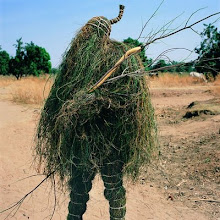I spent the most beautiful day we have had all year in the basement of a museum taking a class on controlling swarms and making splits out of healthy hives. All I could think about was that if I was a bee colony, this would be the day I would swarm. And my beekeeper would be out of commission till 4 so I could probably make a clean getaway.
The class was long and a little scattered but the teacher packed a lot of information into the day, Unfortunately, only about a fourth of the alotted time was spent discussing swarms and swarm control. The rest was random Q&A about diseases, hive set up and bee behavior. My advice to teachers...do not let the students run the class with endless questions. Give your presentation, take questions at the end of each section of info, and do not do the hour and a half every one in the room introduce yourself to the class segment if there are 50 people and we only have 5 hours. Boring. And a waste of precious time.
I learned some cool equipment tricks, like cutting out tines from the ends of the queen excluder so that the field bees are encouraged to head right up into the honey supers with their cargo. You want to keep the queen out of the honey supers because the last thing you want is larvae in your honey. ick. She is too big to fit between the tines of the excluder but the worker bees fit just fine. or so I thought. But it seems that when the bees are full of honey in their bellies they do not fit so well between the tines and it is uncomfortable for them and it slows them down. Sometimes it even discourages them and they drop off their honey below in the brood box. So if you cut out a few wider spaces they will move up and down through the excluder much faster. The field bees come in the front entrance and walk right up the inner wall of the hive to the top of the boxes. The queen stays mostly in the middle of the box, so even though she can fit through the newly made openings in the excluder she probably won't even go over that far in the box to notice there is a new passageway.
I also learned that in the olden days beekeepers would find the queen and PUT HER IN THEIR MOUTH! to keep track of her while they inspected the hive. She has a hard time using her stinger when she is full of eggs so the beekeeper is not likely to be stung. Now there is a special clip that you can catch her in and it holds her gently until you release her back into the hive.
Tuesday I will be making a split out of one of the hives. It had some swarm cells in it the last time I inspected the hive and I do not want it to fly away into the blue sky. My beekeeper friend, Peter, is coming over in the morning to help me go through the hives so I will put up some photos of that whole process.
March 15, 2010
Subscribe to:
Post Comments (Atom)

No comments:
Post a Comment